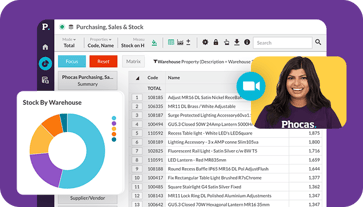The need for data refinement

Our hunger for data is insatiable. Every day, the world creates an astonishing 149 zettabytes of data. To put that in perspective, one zettabyte equals 1 sextillion bytes, enough to store 7.5 trillion MP3 songs or provide over 70 million years of nonstop music.
Data is everywhere, generated by customers, ERP systems, social media and business partners, offering a massive opportunity for companies to gain a competitive edge. However, this vast pool of information is often unstructured and overwhelming. Data is like clutter—you need a plan for how to use it before you let it pile up.
For data to become actionable, it requires refinement – the process of preparing, collating and analyzing raw data effectively to extract value.
What is data refinement?
Data refinement is the process of transforming raw data into a usable and high-quality dataset that can drive data-driven decision-making. It involves a series of steps, including data cleaning, data normalization, and enrichment, to ensure the information is accurate, relevant and consistent.
This process often relies on formal methods or sophisticated algorithms to manage data types effectively. Whether it is through APIs, real-time dashboards or advanced data analysis tools, the refinement process enables businesses to transform disparate sources into cohesive insights. By refining data, companies can eliminate inconsistencies, track data sources effectively, and prepare the information for advanced analytics.
Start small with data requirements
More data doesn’t always mean better. The journey to effective data refinement begins with clear goals. Instead of tackling every possible data type, businesses should focus on their most critical use cases like sales analysis, inventory management or financial performance.
Identifying key metrics ensures efforts are aligned with your priorities. Breaking the process into smaller, manageable modules allows businesses to implement targeted improvements. For example, companies can define the specific real-time insights needed for day-to-day operations and build a database with all the necessary data. From here, dashboards can built so others can see regular updates.
By starting small, businesses can achieve quick wins and build confidence in the data refinement process before including the entire business.
The data refinement process
The data refinement process involves several critical stages to ensure the transformation of your raw data into actionable insights. First, cleaning removes errors, duplicates and irrelevant entries to create a reliable foundation. Next, data normalization ensures consistency by standardizing names, formats, units, and categorizations across databases.
Once refined, the data is analyzed using advanced tools and techniques such as SQL queries, machine learning algorithms and real-time visualization. The final step is the presentation of insights through dashboards and reports that make the information accessible to all users. This structured process ensures that business people work with high-quality data and derive maximum value from their datasets.
Why everyone in a business need insights
Data-driven decision-making is not limited to data scientists or analysts; the rise of self-service data analysis has increased user adoption in many industries and made this achievable.
Three things must be made available to broaden the flow of data knowledge throughout the company: data tools, company-wide know-how, and integrated data responsibility.
As soon as companies have created access and training for the required data know-how, it is time to adapt to the roles and responsibilities. Colleagues from different departments can now access and understand the data sets that are relevant to them. By equipping more team members with real-time, self-service data analytics tools, companies can expect significantly improved results.
Purchasing teams can leverage insights from inventory metrics to better manage stock, while finance departments can access data from across the business and work with collaborators to improve budgeting and forecasting. Providing accessible dashboards and intuitive visualization tools ensures that everyone can access insights and make faster, informed decisions. When insights are available to everyone, teams adapt and learn together, enabling them to share ideas quickly.
Successful companies keep up-to-date with their data so they can react quickly to every situation or opportunity. If you implement fundamental data knowledge throughout the company, you take an essential step towards creating a data-driven culture that sets you up for long term growth.
Data leads to better decision-making
Refined data is the cornerstone of effective decision-making. Business people can reduce risks by basing their decisions on consolidated and accurate information. Refined data also supports predictive capabilities through machine learning and artificial intelligence models.
When businesses apply formal methods to data refinement and ensure thorough data cleaning, they can identify trends and opportunities. Perhaps your company needs more strategies for sales? Determine your primary objectives and build a plan around them. For example, sales teams can use enriched datasets to understand customer behaviour across all channels. Knowing which customers are the most profitable can make them a priority for your sales team or knowing that it costs more to secure new customers than it does to nurture relationships with your current customers, you may want to know which customers are in decline.
Business intelligence tools for organic growth
To achieve the full potential of data, businesses need robust business intelligence tools. These tools combine data science capabilities with user-friendly interfaces, enabling organizations to refine, analyze and act on their data. Modern BI tools offer seamless integration with APIs for data consolidation then automated data cleaning and normalization. By investing in a business intelligence solution, you can ensure its refinement process is efficient and scalable.
These tools drive sustainable growth by turning data into actionable insights. Features such as ease of use and customization influence the functionality of your business effectiveness. That is where a smart BI solution like Phocas comes into play. Business intelligence software can represent analytics in a visual medium. Dashboards organize data information in a format that can be easily configured, shared and interpreted.
The business world’s demand for data shows no signs of slowing down. To stay competitive, businesses must master the art of data refinement, turning raw data into a powerful asset. Whether starting small or scaling efforts across the organization, focusing on data-driven decision-making and leveraging the right BI tools will position companies for success.

Katrina is a professional writer with a decade of experience in business and tech. She explains how data can work for business people and finance teams without all the tech jargon.

Using data to plan for the impact of tariffs and further change
Tariffs are here. Whether you're in manufacturing, distribution or retail, it's important to understand how importing from affected countries such as Canada, Mexico or China or chosing local production, can affect your bottom line. We want to encourage you to scenario plan now not retrospectively.
Read more
Essential KPIs every distribution company executive should measure
For mid-market leaders running a wholesale distribution business, data and business intelligence technology are crucial for monitoring financial and operational performance. However, the real value lies in how your team uses the data insights to influence decision-making.
Read more
5 key FP&A trends for 2025
The role of the CFO is evolving rapidly, extending beyond traditional financial stewardship to encompass business partnering, operational oversight and technological innovation. A 2024 Sage study of over 1,200 global finance leaders reinforces this transformation:
Read more
Are you ready for decision intelligence?
What are your best business decisions? And your worst? Reflecting on these choices, you’ll likely notice a pattern. The best decisions were informed by reliable data, while the worst were made with incomplete or misleading information. Fast and specific business decisions increasingly depend on data. But while data is critical, the human element remains strong. Decision-making requires the right mix of accurate information and human experience, so how does decision intelligence (DI) enhance the decision-making process?
Read more
Find out how our platform gives you the visibility you need to get more done.
Get your demo today